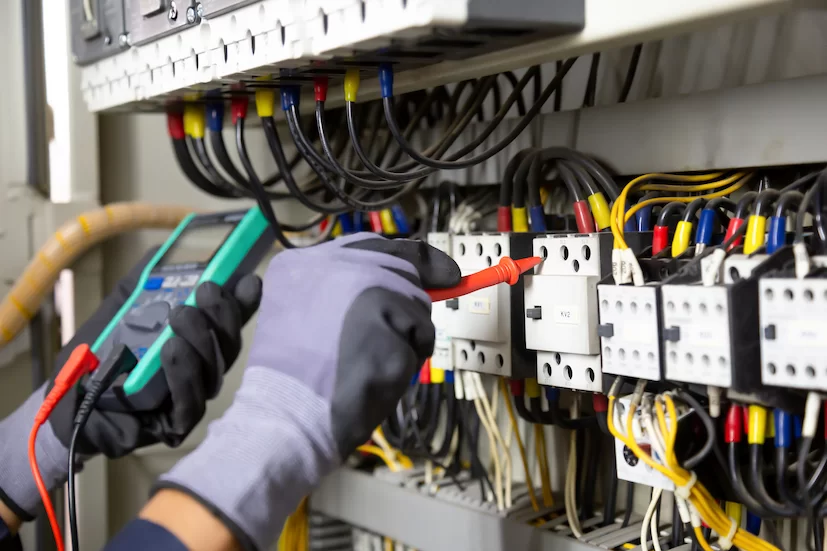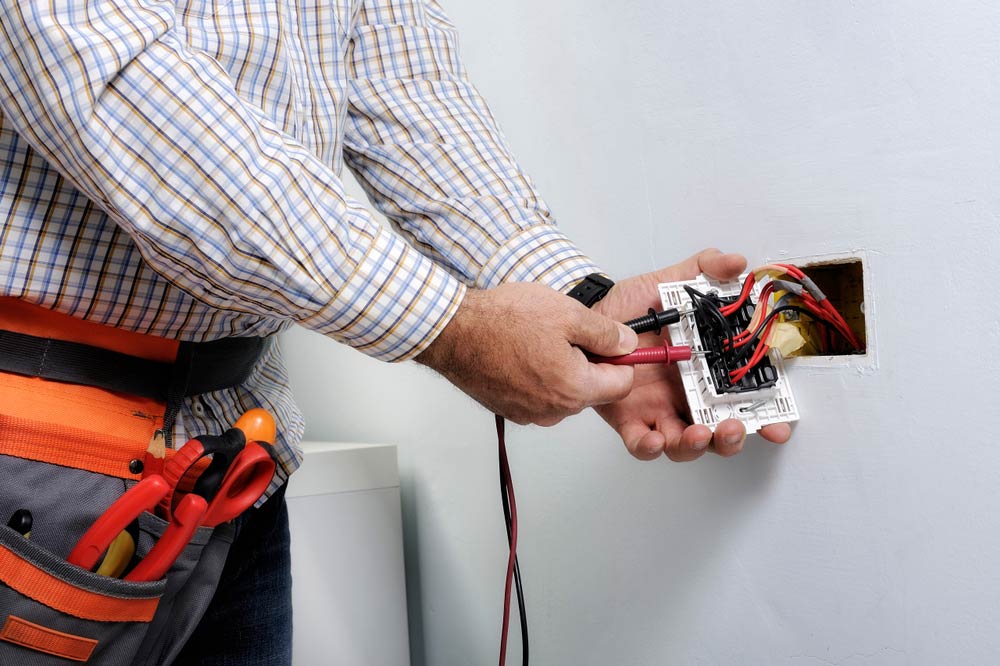Advanced BRE Automation Australia: Changing Your Automation Needs
Advanced BRE Automation Australia: Changing Your Automation Needs
Blog Article
The Ultimate Guide to Electric Setup: Tips and Techniques for a Safe and Reliable Home Circuitry System
In the realm of home maintenance, couple of facets are as essential yet often overlooked as the electrical circuitry system. Making sure a secure and reliable home circuitry setup requires not just a basic understanding of electric concepts yet additionally useful knowledge of setup techniques and upkeep procedures. From browsing the details of cable links to troubleshooting typical problems that might arise, this overview aims to furnish homeowners with the important ideas and tools required for a safe and energy-efficient electric system. By checking out the subtleties of electrical precaution and energy-saving methods, this extensive overview will shed light on the intricacies of home electrical wiring, empowering people to organize their home's electrical framework.
Comprehending Electrical Precaution
To guarantee the security of both people and residential property, understanding and implementing correct electric safety steps is paramount in any type of home wiring task. It is vital to carry out a complete examination of the electrical system prior to starting any type of circuitry project to determine possible risks or issues that require to be resolved.
Additionally, using the appropriate devices and tools is important for preserving safety throughout electrical installments. Protected handwear covers, voltage testers, and safety glasses are some of the standard security equipment that need to be worn to avoid electrical shocks or accidents. It is also crucial to de-energize circuits prior to servicing them and to classify all circuits and breakers plainly to stay clear of complication.

Necessary Devices for Home Electrical Wiring
Guaranteeing the proper application of electric precaution in home wiring tasks includes utilizing a specific set of necessary devices designed to promote the installment procedure effectively and securely. A few of the trick devices required for home electrical wiring tasks consist of a voltage tester for examining real-time cables, cable pole dancers for getting rid of insulation from cords, a cable cutter for exactly cutting cords to size, a screwdriver established for protecting electrical components, electrical tape for insulation and safeguarding links, a cable television ripper for stripping wire sheathing, and a multimeter for gauging voltage, present, and resistance. In addition, a drill with little bits is necessary for creating openings for circuitry and mounting electrical boxes, while fish tapes or poles help in drawing wires through avenues or walls. It is critical to invest in high-grade tools to make certain accuracy, effectiveness, and security throughout home wiring tasks. By having the needed devices conveniently available, home owners can efficiently browse the setup procedure and maintain a secure electric system within their homes - BRE Electrical.
Step-by-Step Electric Installment Overview
Beginning an electric setup job needs precise preparation and adherence to safety guidelines. Before beginning any work, ensure you have a thorough strategy detailing the design of the electrical system, including the positioning of electrical outlets, switches, and components. Take right into account the power needs of each tool to identify the appropriate wire scale and breaker sizes.
The first action in the installment process is to shut down the power supply to the area where you will certainly be working. Make use of a voltage tester to validate that the circuits are de-energized prior to touching any kind of wires. Next off, carefully remove existing components or electrical outlets and disconnect the cords.
When installing new electrical wiring, run cords via walls and ceilings, securing them in position with ideal installations. Follow regional building regulations and manufacturer guidelines for appropriate cable setup and connections. BRE Services. Ensure to identify cords for very easy recognition and future maintenance

Troubleshooting Common Circuitry Issues
Having actually finished the installment process as outlined in the previous subtopic, troubleshooting common electrical wiring problems is a necessary skill for making certain the safety and functionality of your electric system. One usual issue is a tripped breaker, frequently triggered by overloaded circuits or a short circuit. To repair this, find the breaker panel, determine the tripped breaker by searching for the one not completely in the "on" placement, and reset it by flipping it totally to "off" and after that back to "on." Another prevalent problem is a damaged outlet, characterized by no power or recurring power supply. Guarantee the electrical outlet is not regulated by a switch, after BRE Electrical that use a voltage tester to look for power. If there is no power, switch off the circuit, evaluate the wiring connections for any loose or damaged cables, and change the outlet if needed. Constantly flickering lights can suggest loosened circuitry links or an overloaded circuit. To address this, check and tighten all cord connections in the influenced fixtures and switches and rearrange the load on the circuit to balance the electric demand. Regularly examining and immediately dealing with these usual circuitry problems will keep the safety and security and performance of your home electrical system.
Tips for Energy-saving Electrical Equipments
For ideal energy effectiveness in electrical systems, carrying out wise methods and utilizing energy-saving modern technologies is vital. One crucial suggestion for accomplishing an energy-efficient electric system is to upgrade to LED illumination. LED bulbs consume considerably less energy than typical incandescent light bulbs and have a longer life expectancy, making them a cost-efficient option in the long run. Furthermore, installing programmable thermostats can help regulate home heating and cooling down systems, decreasing energy waste when no one is home. One more strategy is to buy energy-efficient devices that are power STAR licensed, ensuring they meet high requirements for energy effectiveness. Appropriate insulation and sealing of home windows, doors, and electric outlets can also avoid power loss, ultimately lowering the workload on electric systems. Lastly, take into consideration integrating renewable power resources like solar panels to more decline reliance on conventional power grids. By including these energy-efficient suggestions and innovations, home owners can not only conserve cash on their electricity expenses however likewise lower their ecological impact.
Conclusion
Finally, applying proper safety steps, making use of vital tools, complying with a detailed installation overview, troubleshooting common concerns, and integrating energy-efficient pointers are important for a secure and reliable home wiring system. By sticking to these methods, house owners can guarantee the durability and capability of their electrical installations. It is necessary to focus on safety and effectiveness when it comes to electrical job in order to avoid prospective risks and to keep a trustworthy electric system in the home.
Report this page